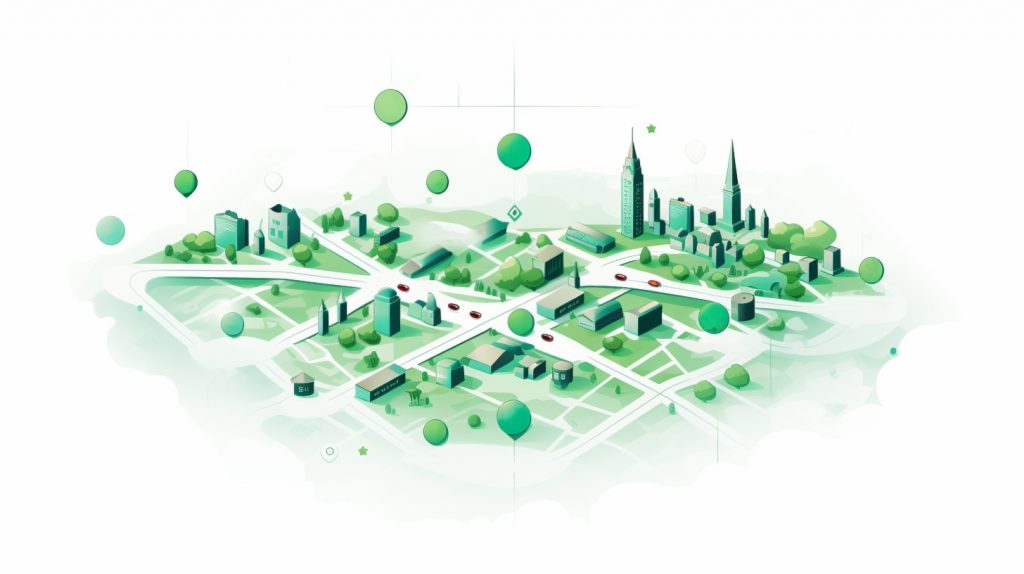The Global Positioning System is indispensable for modern routing solutions. However, the GPS data aren’t ideal. According to studies by the US Federal Aviation Administration, the deviations from real positions may reach up to tens of meters.
Such inaccuracies can become critical for transportation, logistics businesses, and companies that develop driverless vehicles. It also hurts routing algorithms for terrain orientation. That is where map matching comes in.
Wellnuts specialists have earned a reputation for creating and implementing advanced software solutions that incorporate navigation technologies. This article will describe:
- why GPS isn’t as accurate as it may seem
- how to overcome this problem with the help of computer algorithms
- which tools are available for that purpose

What Is Map Matching
The snap-to-road problem occurs when matching geographic maps to real-world orienteering. Typically, traditional orientation methods are based on recording points of an object’s location and correlating it to a road network database. It eases the process of vehicle tracking, route building, and looking for the most favorable logistical paths.
Such algorithms can be both fully autonomous and used in real time. Unlike autonomous, real-time navigation systems simultaneously compare an object’s position and a geographic map. Such platforms predict location based on points up to a specific time. Conversely, offline navigation applications handle all points of an object only after recording the data and comparing it to maps.
Both methods of terrain orientation have their drawbacks. For real-time systems, these are reduced performance and accuracy. Standalone applications are accurate enough but barely suitable for navigating in a “live” environment.
Why Do We Need Map Matching
GPS receivers produce map matching interference and cannot provide adequate results. Such interference is also referred to as “user equivalent range errors.” Here are the main factors that lead to UERE:
Inaccurate timing
Global positioning systems involve transmitting a signal from a receiver to a satellite and measuring its transmission time. If the time on the satellite clock differs from the actual time, errors in geo-positioning occur. The same thing may happen with the receiver’s clock.
Lower and Upper Atmosphere
Passing through different layers of the atmosphere, the signal may not reach through or can be delayed, severely damaging the transmission. Because the density of each atmospheric layer differs, such errors cannot be eliminated entirely.
Satellite Orbit
Each satellite has a unique orbit and trajectory, which can vary in shape and speed during the mission’s course. Therefore, technicians must do complex mathematical calculations to calibrate the signal transmission.
Multipathing
The GPS signal can be incorrectly interpreted due to interference from buildings, land, trees, and other objects. This is why your navigator may malfunction in dense forests, terrain with a complex landscape, or a densely populated urban environment.
Moreover, according to the experts (see the research article on Google Scholar), GPS accuracy suffers from sampling errors. That refers to the fact that some information is lost between the recorded points.
How Does Map Matching Work?
The most popular solutions for improving navigation are based on the hidden Markov model. This approach is used in computer science to find the most likely sequence of road sections that corresponds to the sequence of GPS points.
The software calculates how the estimated road points correspond to the data from the receiver. The program finds probable candidate points in the road chain for each GPS point. From this, the program calculates the most likely (true) path where the sequence of receiver points corresponds to the existing road network.
Now, let’s examine how dedicated positioning software enhances the orientation experience.

Solutions for Dealing with GPS Inaccuracies
Here are the most popular map matching solutions that address the problem of inaccurate geolocation data.
Fast Map Matching
FMM is a matching mechanism written in Python and C++. The open-source system helps minimize the errors that occur with traditional matching methods. By doing so, experts achieve optimal accuracy, power, and scalability up to millions of points.
FMM uses additional computational algorithms and can handle up to 45,000 points per second.
Roads API by Google
The Snap to Roads technology by Google provides the best-fit road geometry for a set of GPS coordinates. One request can use a maximum of 100 locations, which isn’t suitable for building long routes.
Mapbox API
This solution is more flexible and customizable than the Google Maps API. Mapbox uses WebGL to create interactive maps. It also has limitations on the number of locations and requests (up to 1500 per day or 300 per minute).
OSRM and Valhalla
These map matching open-source systems are pretty similar and most suitable for transportation and logistics companies. Maximum performance, analysis, and visualization are achieved with OpenStreetMap. These companies offer high scalability and can map millions of points and trajectories. Сompared to Valhalla, OSRM requires high memory usage but provides better localization.
Wellnuts specialists carefully monitor map-matching innovations to offer clients the most efficient solution. We can help to optimize online geo-positioning based on traffic and road conditions.
We also use orientation sensors to enhance signal and data correctness. For example, for the needs of a transportation company, we equipped each truck in its fleet with GPS devices. The result was a smooth and reliable navigation system. The company managed to reduce fuel costs by 20%. In addition, the sensors help keep track of the vehicle’s status, which allows the customer to minimize maintenance costs by 40%.
Benefits of Map Matching
The map matching API is an indispensable solution for those who regularly encounter trucking and logistics issues. Here are a few benefits it can give you:
- Reduced fuel costs. The system automatically analyzes the road network and suggests the best route with minimal traffic jams. As a result, the driver chooses the shortest route with minimal fuel consumption.
- Fewer accidents. Algorithms calculate traffic congestion and predict dangerous situations using more accurate data about routes.
- Traffic analysis and prediction. Based on the position of vehicles in the flow and the times of the highest peaks and troughs, the software system can predict traffic jams on a particular route.
Wrapping Up
Map matching is essential due to unavoidable inaccuracies in GPS data. There are a number of tools that can be used for topographic map matching. However, to harness their full potential in a custom-built software solution, you need a reliable technical partner. Our company can help you with this task.
The Wellnuts team is passionate about turning technological innovation into turnkey business solutions. We can produce advanced systems combining IoT sensors and proven map-matching technologies that will generate significant benefits for your company.
Tell us about your project if you dream of implementing a navigation solution for your business. Our experts will help you implement even the boldest idea in the shortest possible time.
Ready to talk? Contact us: ask@wellnutscorp.com



